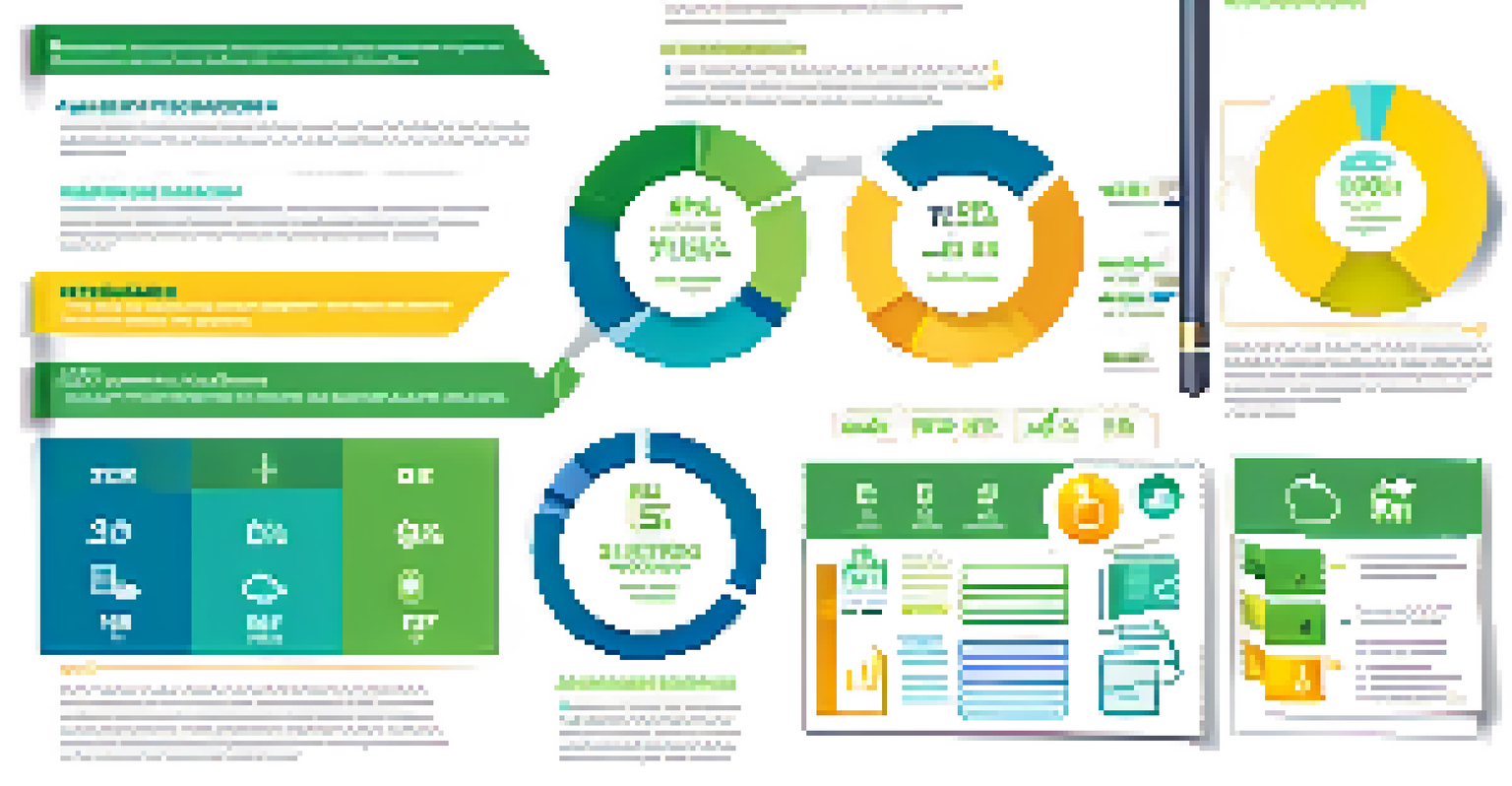Measuring the Success of Your Flexible Work Policies

Understanding Flexible Work Policies and Their Importance
Flexible work policies are designed to adapt to the evolving needs of employees while maintaining productivity. They can include options like remote work, flexible hours, and job sharing. As more organizations embrace these policies, understanding their significance becomes crucial for overall success.
The future of work is not about where you work, but how you work.
These policies not only cater to employee preferences but also enhance job satisfaction, leading to a more engaged workforce. With the rise of remote work, flexibility has become a top priority for many people when choosing their jobs. Therefore, measuring the effectiveness of these policies is essential for attracting and retaining talent.
By assessing flexible work policies, organizations can identify areas for improvement and better align their practices with employee needs. This proactive approach not only boosts morale but also drives performance, making it a win-win situation for both employees and employers.
Defining Key Performance Indicators (KPIs) for Measurement
To measure the success of flexible work policies, it’s essential to define clear Key Performance Indicators (KPIs). These KPIs can include employee productivity, job satisfaction scores, and retention rates, among others. By establishing these metrics, organizations can effectively track how well their policies are working.

For instance, if employee productivity remains high or improves with flexible arrangements, it suggests that the policy is effective. Additionally, regular employee feedback can give insights into job satisfaction, revealing whether employees feel supported and valued in their roles. This data helps organizations make informed decisions about their work policies.
Importance of Flexible Work Policies
Flexible work policies enhance employee satisfaction and engagement, making them crucial for organizational success.
Moreover, KPIs can also help highlight areas that may need refinement. If retention rates are low despite flexible policies, it may indicate that other factors are at play, prompting a deeper investigation into workplace culture or compensation.
Gathering Employee Feedback for Insights
One of the most effective ways to measure the success of flexible work policies is through employee feedback. Surveys, one-on-one interviews, and group discussions can provide valuable insights into how employees perceive these policies. Listening to their experiences can help identify what works well and what doesn’t.
Flexibility is the key to stability.
For example, an organization might find that while remote work is appreciated, employees crave more opportunities for collaboration. This feedback can guide adjustments, ensuring the policies evolve alongside employee expectations. Additionally, creating a culture of open communication encourages employees to share their thoughts freely.
Regularly gathering feedback not only helps in refining policies but also fosters a sense of belonging among employees. When they see their input being valued and implemented, it enhances their engagement and commitment to the organization.
Analyzing Productivity Metrics Post-Implementation
After implementing flexible work policies, it’s important to analyze productivity metrics to assess their impact. This can involve comparing output levels before and after the policy changes. Understanding how work quality and quantity are affected can provide concrete evidence of a policy’s effectiveness.
For instance, if productivity levels have increased, it could indicate that employees are thriving in a more flexible environment. However, if there’s a decline, it may necessitate a review of the policies in place. By focusing on data, organizations can make objective decisions based on real outcomes.
Measuring Success with KPIs
Establishing clear Key Performance Indicators (KPIs) allows organizations to effectively track the impact of flexible work policies.
Moreover, productivity analysis can extend beyond individual performance to team dynamics. Identifying trends in collaboration or project completion rates can shed light on how flexible options influence teamwork and project success.
Assessing Employee Retention and Turnover Rates
Retention and turnover rates are critical indicators of the success of flexible work policies. A high retention rate suggests that employees appreciate the flexibility offered, while a spike in turnover may signal dissatisfaction. Monitoring these metrics can help organizations gauge employee loyalty and engagement.
For example, if turnover decreases significantly after introducing flexible options, it could indicate that employees feel more valued and are less likely to seek opportunities elsewhere. Conversely, if turnover remains high, it may prompt a review of additional factors contributing to employee dissatisfaction.
By regularly tracking retention and turnover rates, organizations can proactively address any underlying issues. This approach not only helps fine-tune flexible work policies but also contributes to a healthier organizational culture.
Utilizing Technology for Measuring Success
In today’s digital age, leveraging technology is key to measuring the success of flexible work policies. Tools like performance management software, project management applications, and employee engagement platforms can provide real-time data on productivity and employee satisfaction. These resources make it easier to track and analyze relevant metrics.
For instance, performance management software can help managers set goals and monitor employee progress, while engagement platforms can gather feedback seamlessly. This technology empowers organizations to make data-driven decisions efficiently, ensuring they stay ahead of the curve.
Employee Feedback Drives Improvement
Gathering employee feedback is vital for refining flexible work policies and fostering a culture of open communication.
Adopting the right technology not only streamlines the measurement process but also enhances communication within teams. By integrating these tools, organizations can create a transparent environment where employees feel supported and connected, regardless of their work location.
Benchmarking Against Industry Standards
Benchmarking your flexible work policies against industry standards can provide valuable context for success measurement. By comparing your metrics with those of similar organizations, you can gain insight into how your policies stack up. This practice helps identify best practices and areas for improvement.
For example, if your organization has lower retention rates than industry averages, it may indicate that your policies need reevaluation. Alternatively, if your productivity levels are higher, it could validate the effectiveness of your approach. Understanding where you stand can guide strategic decisions moving forward.

Moreover, industry benchmarks can inspire innovative ideas. Learning how leading organizations implement their flexible work policies can spark new initiatives that enhance employee experience and drive overall success.